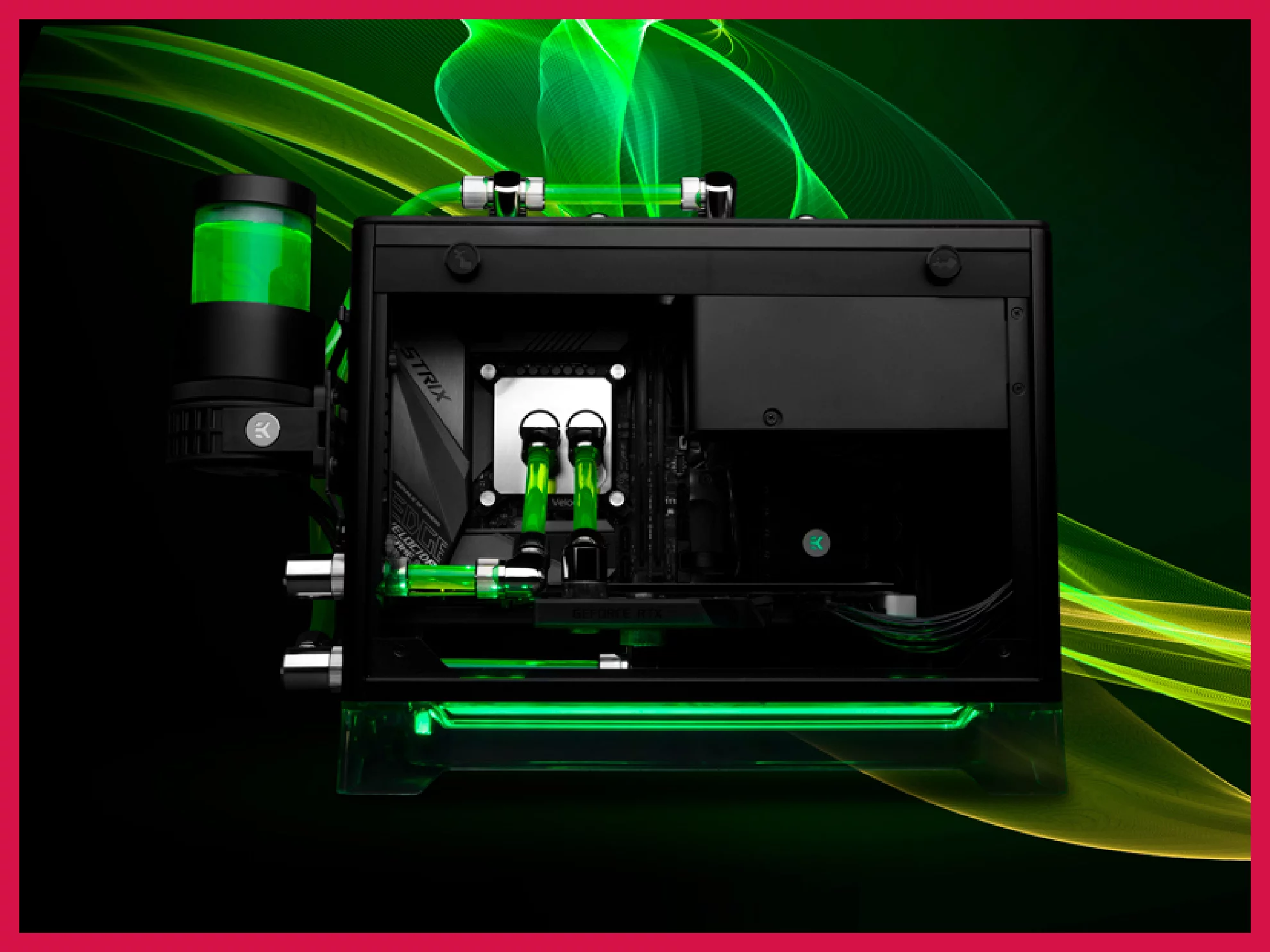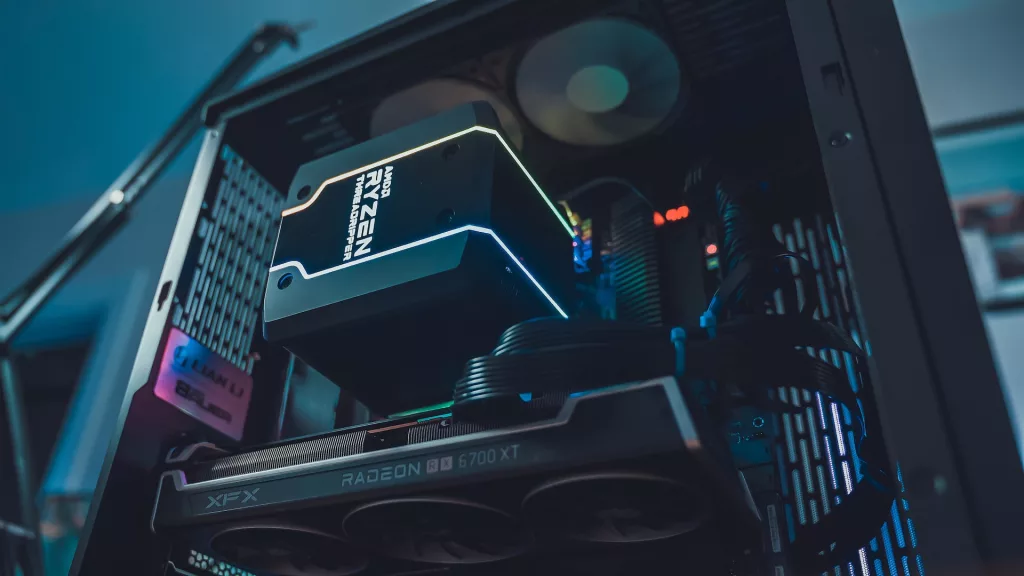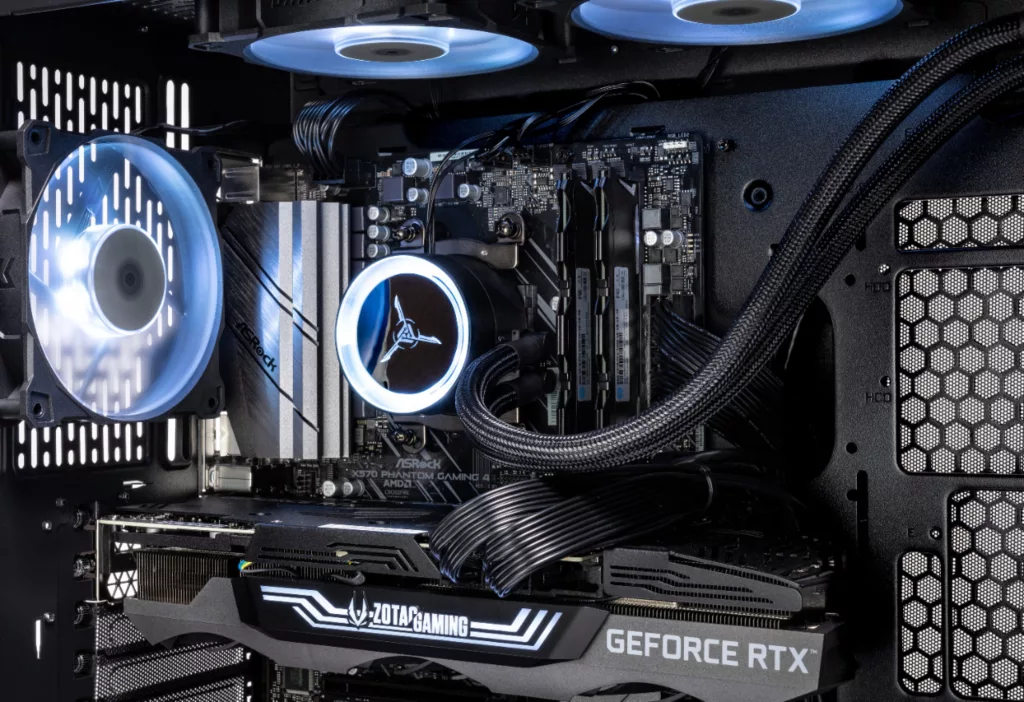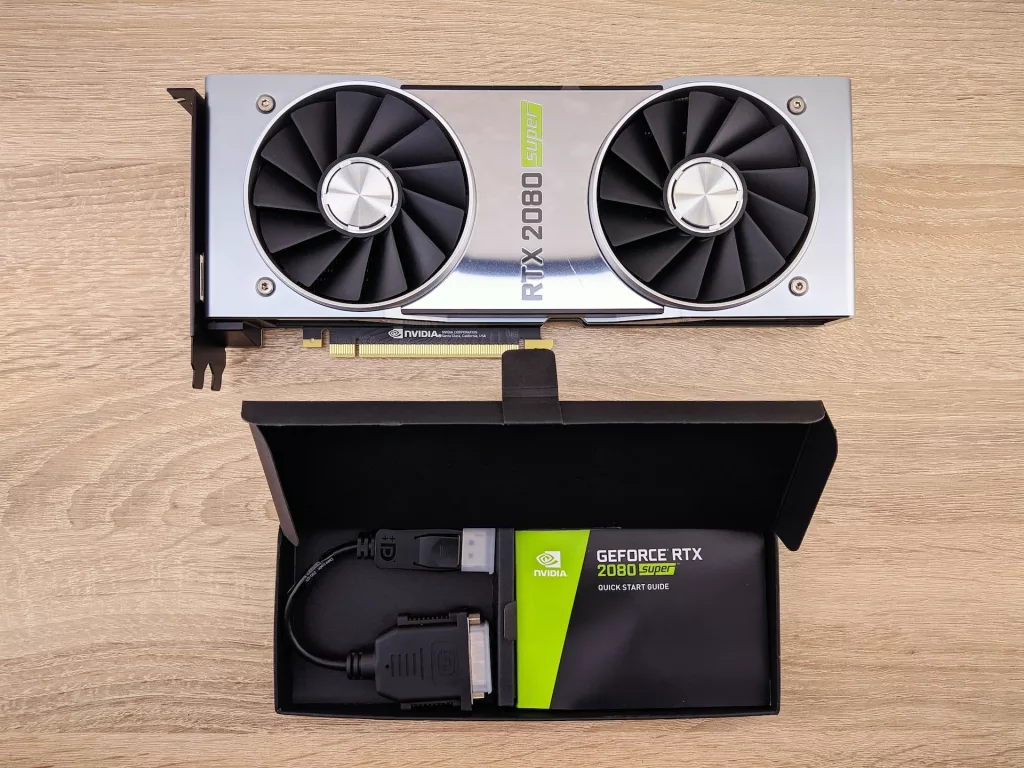Liquid cooling provides much lower temperatures while gaming than traditional cooling (heatsinks and fans). The coolant that’s used in liquid cooling has considerably higher thermal conductivity than air and even water. Besides, it provides several other benefits as well.
Liquid cooling is similar to water cooling. Rather than water, you use a coolant. This coolant is most probably a dyed concentrate that has a blue or neon-ish color, which makes the inside of your case look cool, especially when paired with RGB lighting on internal fans, the board, the video card, and other components.

This article is a part of a series on water blocks and water cooling in general. Start with an explanation of all terms such as water block, loop, liquid cooling, coolant, etc.: Water cooling dictionary What is a water block – Gamer’s guide Water block price for PC cooling Is a water block worth it? Are water coolers better than fans? Is liquid cooling worth it? What does a CPU water block do? Also read if applicable: Water cooling block for RTX 3080 | Water cooling block for RTX 2080 Ti | Water cooling block for RX 5700 XT | Water cooling block for RX 580
Is liquid cooling hard to maintain?
It’s fairly hard to maintain. For example, dyed concentrate used in coolants can produce goop inside the tubing. It has to be cleaned every 4-5 months.
Besides, giving the entire liquid cooling system a thorough check every few months is pretty much a rule. You have to make sure that all the fittings are tight and that there are no blockages or leaks. Chances are that a blockage or fitting issue will become apparent if you check for it constantly before it can cause any serious damage to the hardware.
Given that you also need to maintain an air-cooled PC, that’s mostly about cleaning the fans – which is a much easier task than auditing the entire liquid cooling system.
What are the other benefits of liquid cooling besides better cooling?
The liquid coolant is usually a dyed concentrate. As such, it helps make your PC more colorful. Seeing this colored liquid move under some flashy RGB lighting is simply amazing.
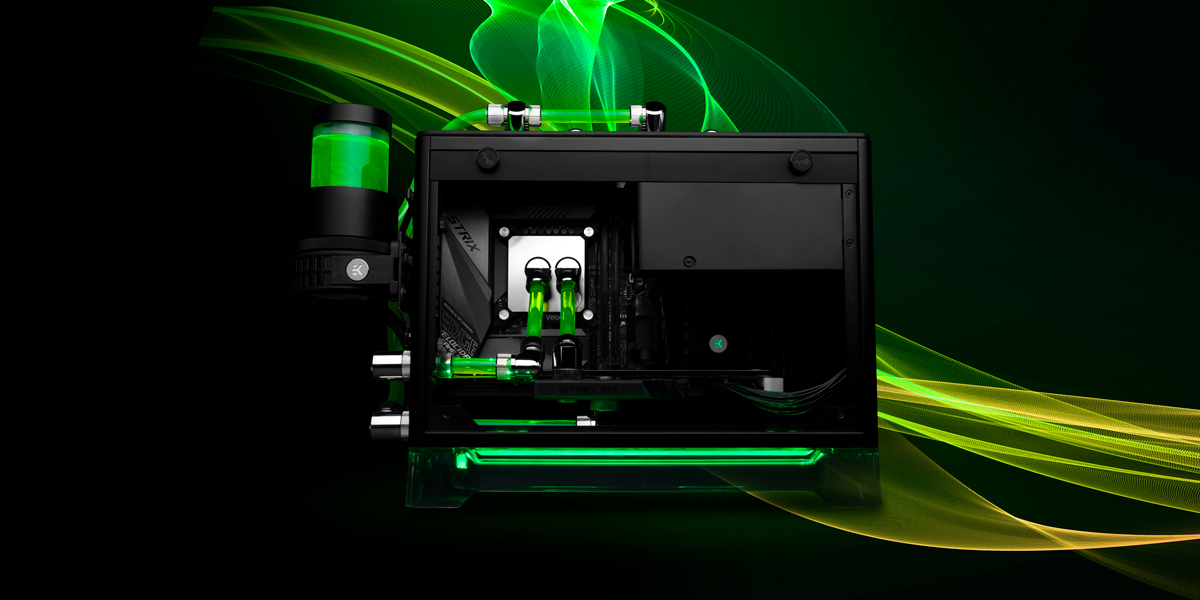
The motherboard also benefits. Not only are you able to see more of it, manage wires better, and say goodbye to RAM placement problems arising out of the CPU cooler being too big – you’re also putting lesser weight or load on the motherboard as the entire system is very light compared to heatsinks and aftermarket CPU coolers combined (in terms of the load on the motherboard specifically – the coolant is pretty heavy otherwise).
You’ll also be improving the lifespan of your component thanks to better management of heat.
Liquid cooling produces much less noise than multiple fans would in a typical gaming PC. However, that’s not always true. My first DIY water cooling build was dead silent, and much more effective in cooling than the aftermarket air cooler. However, my current rig uses full-fledged proprietary liquid cooling with a triple-fan radiator at the top, as is usual with modern liquid-cooled PCs. These radiator fans are handling all of the heat dissipation that my PC needs vs. a set of 4-5 fans in an air-cooled PC. Consequently, they always run at full speed and produce more noise than a 2-inlet-2-outlet fan system with pretty much the same hardware.
Does liquid cooling need frequent refilling?
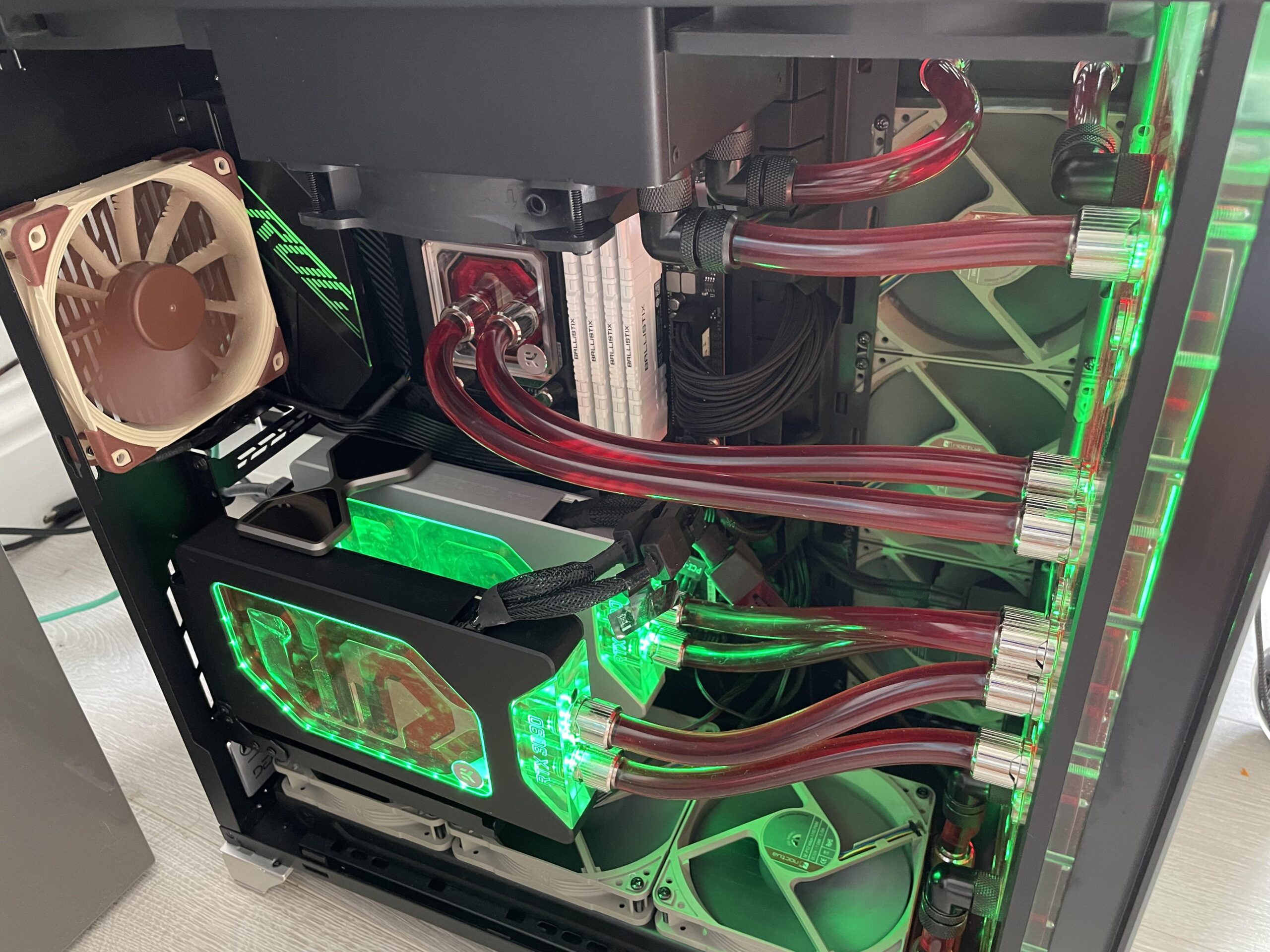
No. The coolant used in liquid cooling should be replaced every year or so. It’s more like thermal paste than a mobile phone. Of course, the thermal performance will degrade over time mainly due to particulate buildup. You can use the coolant for up to a year without any issues, however.
What are some problems with liquid cooling?
So far, we’ve only talked about what’s great about liquid cooling. But the world of liquid cooling isn’t without its fair share of problems.
Let’s go over the obvious ones.
- One leak and all hell will break loose. Liquid cooling is risky.
- You need additional skills and tools to install a liquid cooling system (unless you go for overly expensive all-in-one setups).
- Liquid cooling is much more expensive and harder to maintain than air cooling.
- If you have to repair any aspect of liquid cooling ever, you have to drain the entire system out. Say goodbye to the PC turning on for troubleshooting. Additionally, support for liquid cooling repairing in shops is pretty limited and sparse. A small problem can quickly become huge for you.
- The liquid is heavy. If you want to move the PC around then it can be a mess. For longer travels, it’s always recommended to drain the coolant and refill it later.


